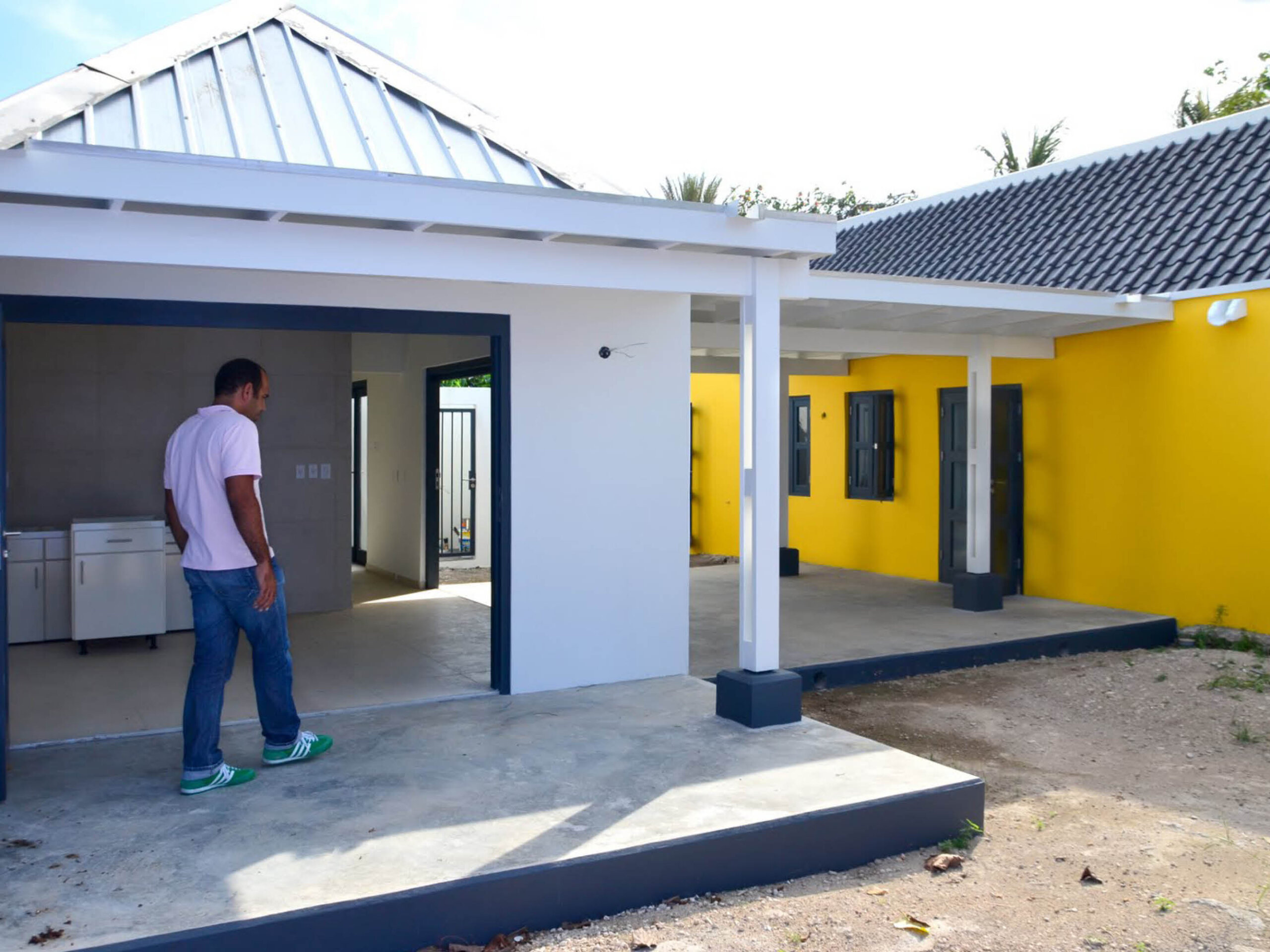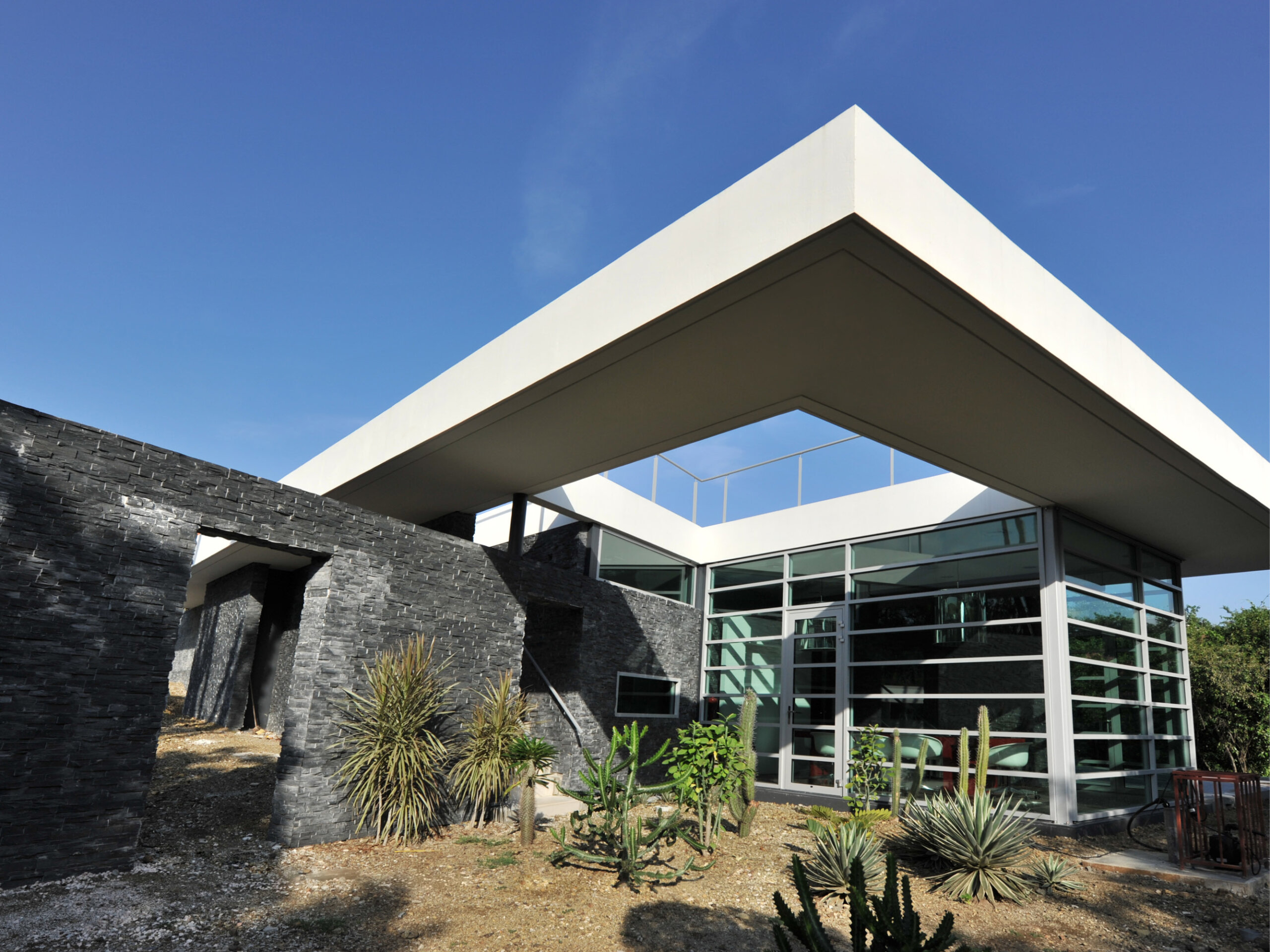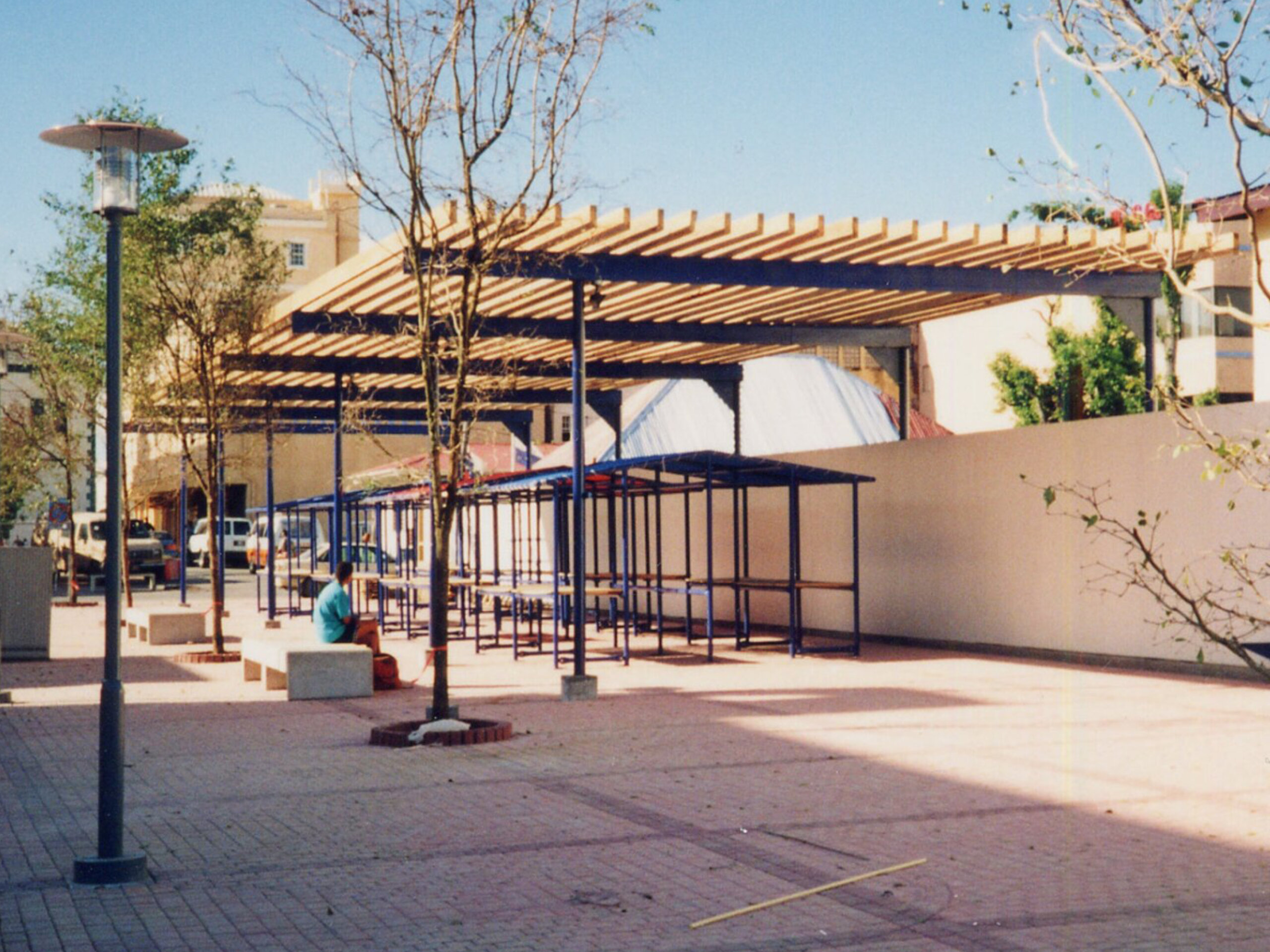We are counting down to the end of the year with only a few 25th anniversary stories to go. In this article we’ll share the smallest project that our firm has made so far.
“This was my first reconstruction project, which I designed in 1996. Even though the design was made in 1996, it was executed in years later and was delivered around the time we started lyongo architecture. The small building that you see, is a toilet facility which we added to Fort Oranje as part of the reconstruction of the old post office.”
About the fort
Fort Oranje was built on top of the rock face of Oranjestad; the capital of the island of Sint Eustatius in the Dutch Caribbean. In 1636 the Dutch built the current Fort Oranje on the same spot as where the French fort was located. The fort has been renovated and expanded several times in the years that followed. Mainly because of the different occupiers of the island, which also meant that the fort was adjusted by its new owner. It’s current form dates back to the beginning of the eighteenth century. This stone structure was built by the British in 1703.
Until 1846, Fort Oranje served as a garrison for army infantry and artillery. After being empty, the fortress was renovated and set up as an administrative center to house the governor’s office, government services and prison. Nowadays it is a place for tourists to visit.
Recreating the past
“No matter how small or large your project is, with a reconstruction project you always research the history. What once stood here and what did it look like? And what was the significance of the building? Reflecting on history, this building tells a story of colonial occupation – and also of military defenses.”
Lyongo made the reconstruction drawings for the old post office and later tourist office. Unfortunately, the tourist office needs restoration again but the toilet building still stands tall. “The toilet facility was part of a larger complex of the fort that I was allowed to work on. We had reconstructed the post office and add a veranda to the complex on the northern side. Fort Oranje is now a tourist attraction, so it is important that buildings can withstand heavy use. This was one of the reasons to make the toilet building in stone, different than the historic buildings. The other reason was that we wanted the toilet building to be part of the fort so that it would not stand out.”
Working with reconstructions
Lyongo: “It’s nice to reflect on this project, especially because of its small size. For me it doesn’t matter if I work on a big or small project. I work with the same dedication on all my projects and believe that each project can contribute to improving the living environment.”
Over the years our agency has worked on different heritage projects. From 50 square meters to 1200 square meters. There are a lot of heritage projects in our portfolio. “Buildings a bearer of stories, and by restoring monumental buildings we keep the stories alive. But I do believe that we should not be afraid to add contemporary elements to old buildings, because these new interventions add to the story. In the case of reconstruction projects, that works a little differently. Then you work on a design that takes the user or visitor back to times of the past because the building looks almost the same. With these kinds of assignments, it is about looking at how you can bring back history as best as possible, for example with materials and construction techniques. For the post office building we had an old drawing (see image) and a few images to make the reconstruction drawing. But we also studied the Georgian Caribbean wood architecture to get a grasp of the typical detailing in lumber of those days.”
In some cases, such as Captain Quarters on Saba, you can use modern techniques to bring the building up to a contemporary standard. For example, we applied insulation there, a sustainability measure that is hardly used on Saba.
New challenges
Parts of the fort are now in need of restoration. But the environment also needs some work. Since the building is located on a rock face, the island is working to prevent erosion of the cliff. Back in 2019, 2,800 anchors, 7,400 square meters of canvas and just under 16,000 square meters of mesh have been placed. This has been a purely infrastructural work. We believe that a task like this should have been approached from a broader perspective where infrastructure is combined with environment and esthetics. Hopefully Fort Oranje will keep on being improved.












